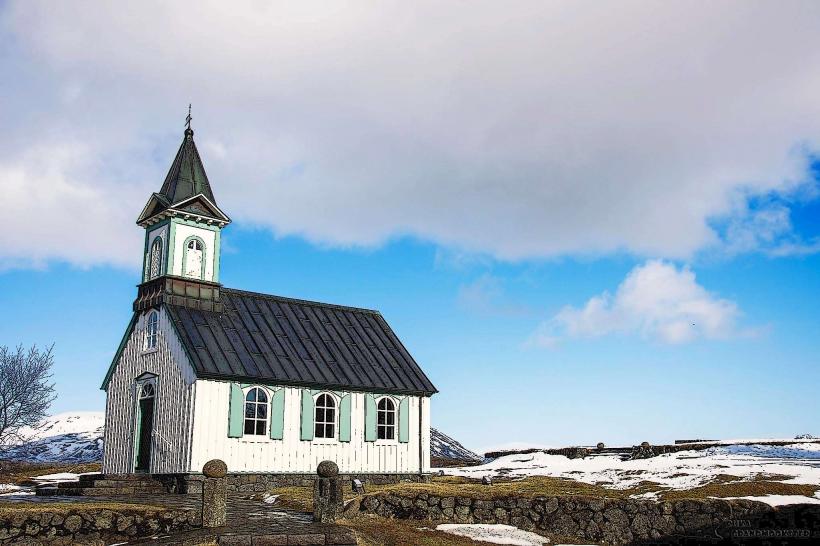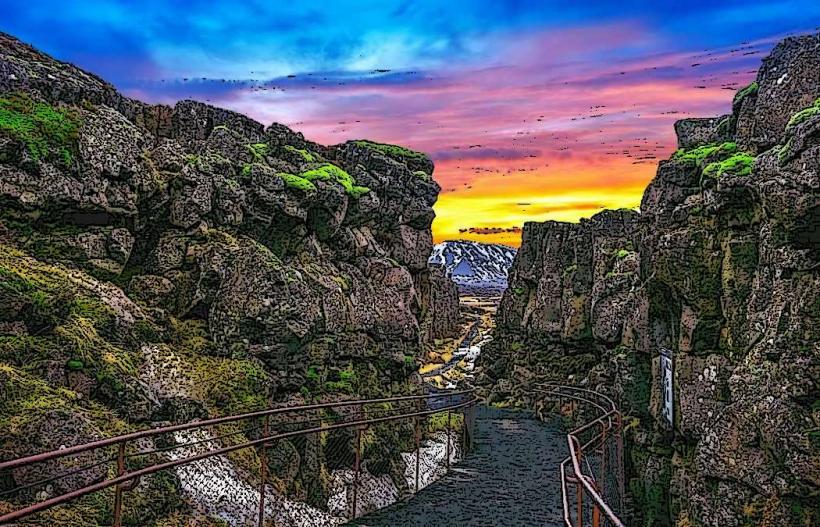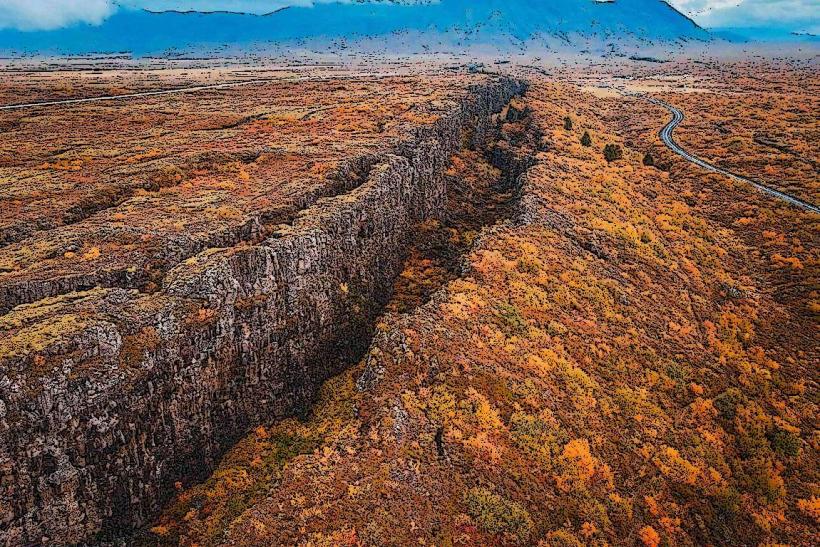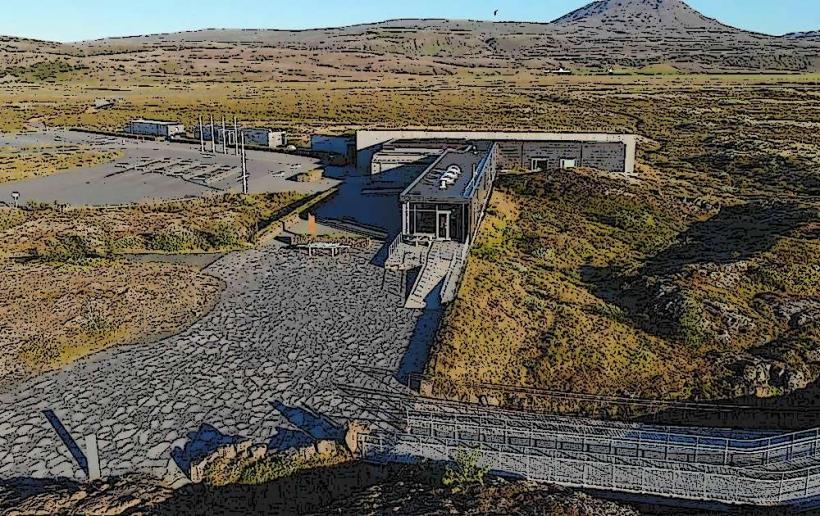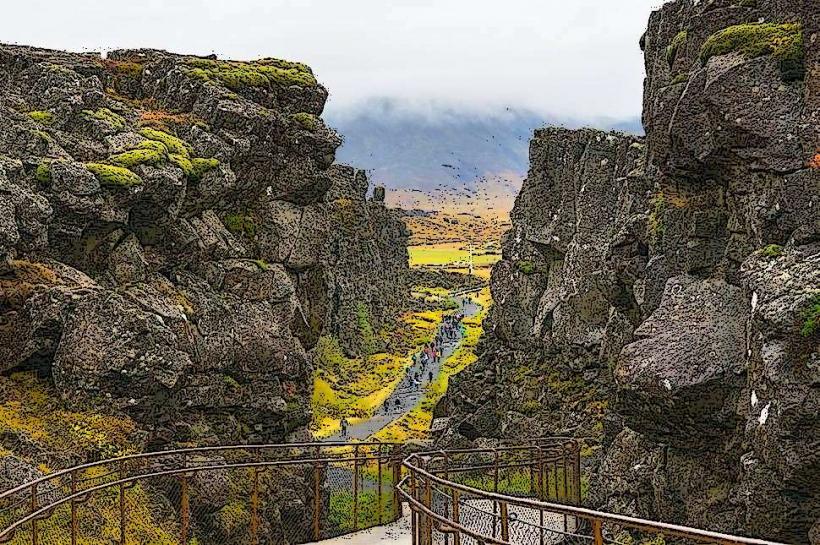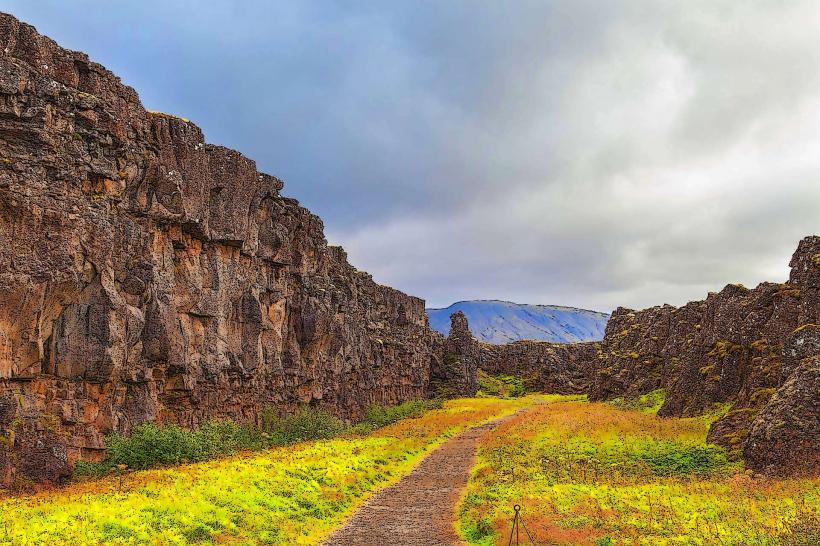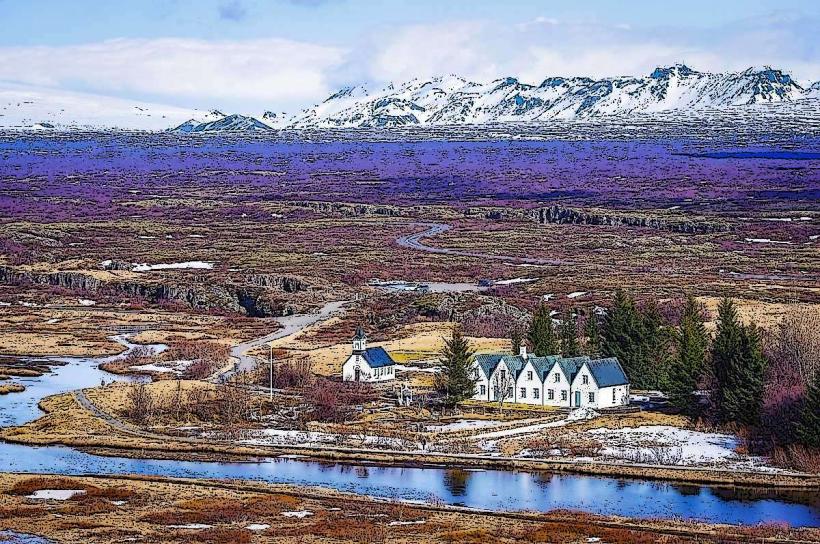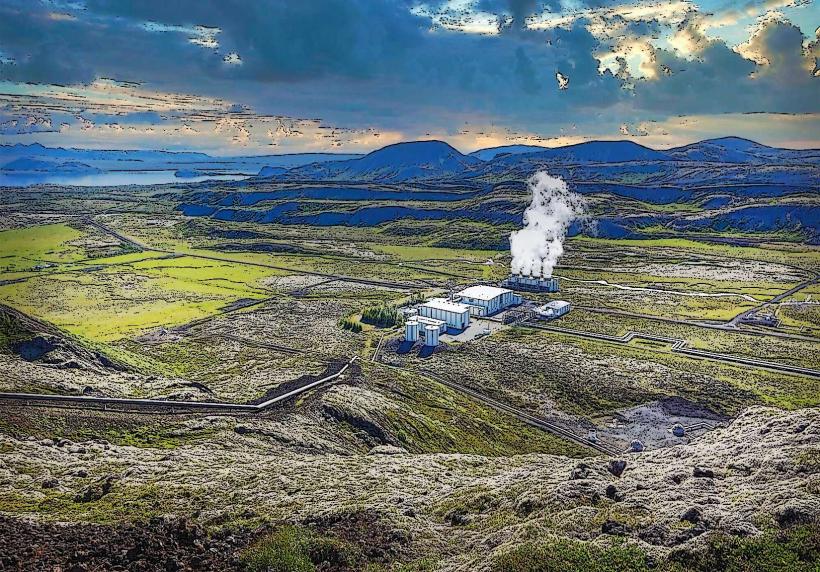Information
City: ThingvellirCountry: Iceland
Continent: Europe
Þingvellir (pronounced Thingvellir), a site of profound historical, cultural, and geological significance, is located in southwestern Iceland. While it is widely recognized as a UNESCO World Heritage Site and a key stop on the Golden Circle route, its importance goes beyond its famous landmarks. Here’s an in-depth look at Þingvellir:
Geography and Natural Setting
- Location: Þingvellir lies in a rift valley at the boundary between the North American and Eurasian tectonic plates. It is part of Þingvellir National Park, which spans 237 square kilometers (91 square miles) and includes diverse landscapes like lava fields, lakes, rivers, and forests.
- Geology: The park showcases the effects of plate tectonics, with visible fissures, such as the Almannagjá gorge, formed by the movement of the tectonic plates. This geological activity continues to shape the landscape, creating an evolving and dramatic terrain.
- Lake Þingvallavatn: The largest natural lake in Iceland, Þingvallavatn, dominates the area. Its crystal-clear waters, fed by underground springs, are home to unique ecosystems and are ideal for snorkeling and diving.
Climate
- Temperatures: Þingvellir has a subarctic climate, with cold winters averaging around -1°C (30°F) and cool summers with highs near 11°C (52°F). The area is often windy and experiences frequent rainfall, contributing to its lush vegetation.
- Seasonal Light: Like much of Iceland, Þingvellir experiences long daylight hours in summer and brief, dark days in winter, creating varying atmospheres throughout the year.
Historical and Cultural Significance
- Site of the Alþingi: Þingvellir was the site of the Icelandic Alþingi (Althing), one of the world’s oldest parliaments, established in 930 CE. It served as the center of Icelandic governance, lawmaking, and social gathering until 1798. The open-air assembly brought together chieftains and representatives from across the island to resolve disputes, pass laws, and celebrate community traditions.
- Symbol of Independence: Þingvellir holds a central place in Iceland’s national identity. It was where the Republic of Iceland was declared in 1944, marking its independence from Denmark.
- Folklore: Þingvellir is steeped in Icelandic sagas and folklore, with stories of feuds, love, and supernatural beings tied to its landscape.
Natural Environment and Biodiversity
- Flora: The park features a mix of native and introduced plant species, including birch trees, mosses, and wildflowers. The lava fields are covered with delicate lichens, adding a unique texture to the terrain.
- Fauna: Þingvellir is home to various bird species, including ducks, geese, and Arctic terns. The lake and its tributaries support fish like Arctic char and brown trout.
- Geothermal Features: Although not as prominent as in other parts of Iceland, Þingvellir has some geothermal activity, contributing to its diverse habitats.
Activities and Experiences
- Hiking: The park offers well-marked trails that traverse its dramatic landscapes, including fissures, lava fields, and meadows. Walking through Almannagjá gorge is a highlight.
- Diving and Snorkeling: The Silfra fissure in Þingvallavatn lake is one of the world’s top diving and snorkeling sites. The crystal-clear water offers visibility of over 100 meters (330 feet), allowing divers to explore the tectonic boundary underwater.
- Wildlife Watching: Visitors can observe birds and other wildlife in their natural habitats, particularly around the lake and rivers.
Sustainability and Preservation
- Conservation Efforts: Þingvellir National Park is a protected area, with strict guidelines to preserve its natural and historical integrity. Efforts include limiting construction, regulating tourism, and managing trails to prevent erosion.
- Renewable Energy: Iceland’s commitment to renewable energy is evident in the region, where geothermal and hydroelectric power sources dominate.
Accessibility and Infrastructure
- Proximity to Reykjavik: Þingvellir is about 40 kilometers (25 miles) from Reykjavik, making it easily accessible by car or guided tour. The drive takes around 45 minutes.
- Visitor Facilities: The park has a visitor center with educational exhibits about its history, geology, and ecology. Facilities include parking, restrooms, and cafes.
- Signage and Trails: Trails and points of interest are well-marked, with informative signs that explain the site’s significance in Icelandic and English.
Atmosphere
- Þingvellir exudes a sense of timelessness and serenity, offering a connection to both Iceland’s natural beauty and its storied past. The interplay of tectonic forces, cultural history, and scenic tranquility makes it a place of reflection and awe.
Þingvellir stands as a testament to Iceland's natural wonders and its people's resilience and innovation. Beyond its landmarks, it offers a deeper understanding of Iceland’s history, geology, and the enduring bond between its landscapes and inhabitants.

